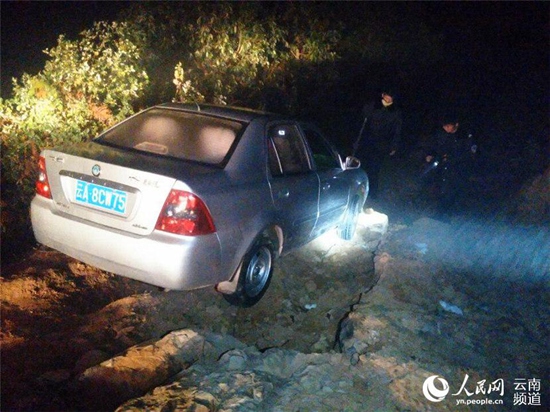Baidu, as the four kings of international AI, how to practice corporate social responsibility
Car navigators allow us to reach our destinations conveniently and quickly. Nowadays, more and more cars are directly equipped with navigators. The development of navigators has been rapid in recent years, but not long ago, the national quality inspection department found that some car navigators not only couldn’t find the way, but sometimes even brought risks to driving. What caused the navigator to have frequent problems when finding the way? Where will the car navigator go in the future?

A couple in Yunnan were led into the mountains by unreliable navigation while driving an outside car. (Image credit: People’s Daily Online)
The current navigation problems can be generally divided into two categories: the first category is problems with hardware, especially key components; the second category is problems with software, maps and other content parts – the core of which is the problem of map information, that is, the failure to timely update the map information of the user’s area. There are a plethora of companies making car recorders on the market, and the number is quite large, but there are only a few companies that really have the qualification to make electronic maps issued by the national surveying and mapping geographic information administrative department.
The key to determining the quality of the navigation hardware is also two points, one is the sensitivity of the antenna contact, the higher the sensitivity, the better the reception of the navigation signal; the other is the ability to resist various electromagnetic wave interference in the adjacent environment, the stronger the anti-interference ability, the worse the reception of the navigation signal. For example, many car owners now like to put film on the windows of the car to protect against the sun, and the advanced film contains metal wire, which turns the already relatively closed interior of the car into a quasi-" Faraday cage ", which greatly enhances the shielding ability of various electromagnetic signals from the outside world. Some car navigators have built-in antennas, but they are not sensitive enough. In addition, the shielding ability of the film is slightly stronger, which may affect the normal use of the navigator by the owner.
Let’s take a look at the future development trend of navigation. What will navigation look like in the future? Nowadays, Google Maps and Baidu Maps already have 360-degree street view navigation functions, creating a more realistic virtual environment. In fact, when we drive, most of us still use flat 2D navigation, and drivers and friends need to perform a "route change" in their brains when using navigation, and sometimes they will inevitably miss some intersections. In response to this, many car manufacturers and network navigation service providers have developed "front window display navigation" technology. This technology is derived from the flight control interface of the aircraft. The navigation route is displayed in real time on the windshield in front of the car, and then superimposed with the actual road conditions, which is more conducive to the efficient driving of the driver.
In the next decade or so, with the popularity of autonomous driving, car navigation will be "no navigation" as the development goal. Navigation can not tell people how to drive to their destination, but directly give orders to the car, which direction the wheels should turn and how to go.
In addition, there is a major trend in the field of navigation, which is to deal with the development of hacker capabilities. Today’s cars are becoming more and more electronic, networked, and intelligent. Cars have gradually become a super-large Internet end point that can be driven; and navigation components are the core equipment of this mobile Internet end point. Hackers can implement various malicious purposes by interfering with GPS devices or hacking into vehicles to everything. For example, changing the route map in the target user’s navigation, getting on the bus, getting off the bus, and rewriting the middle route. The plot in the movie "007" is no longer impossible today.
This point about traffic safety needs to be paid attention to by users, and it is also expected that relevant cyber security companies, automobile companies and navigation service providers will pay great attention.
Author: Ministry of Industry and Information Technology Interactive Media Industry AllianceDigital Culture Working Group Leader, Expert Committee Member, Bao Ran
